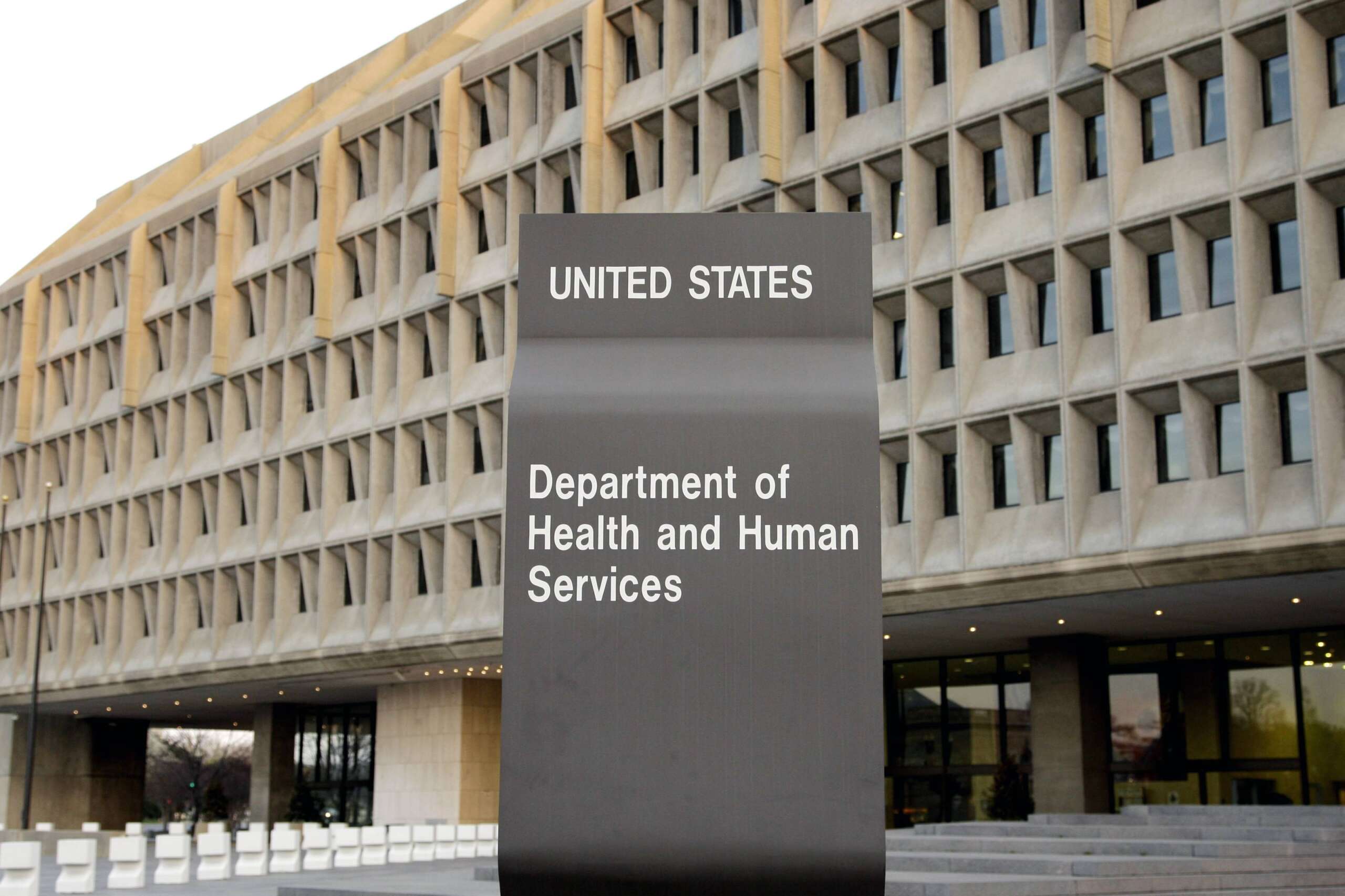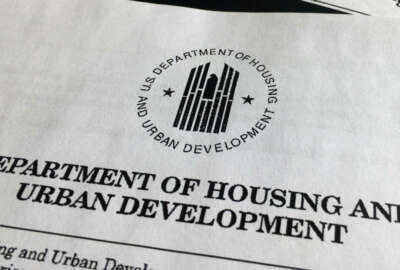If this federal office building could talk, it would demand respect
The Hubert H. Humphrey Federal Building, home to headquarters for the Health and Human Services Department, might also lament about being considered ugly. In fact,...
The great comedian Rodney Dangerfield became famous for his jokes about lack of respect, partly for being ugly. One went like this: He was so ugly as a child, his dad carried around the picture that came with the wallet. If buildings could talk, the Hubert H. Humphrey Federal Building, home to headquarters for the Health and Human Services Department, might also lament about being considered ugly. In fact, its become something of an internet thing, after a Washington newspaper called HHS the ugliest building in D.C. Federal Drive with Tom Temin spoke with online communications director Kelly Langford, and the acting assistant secretary for public affairs, Kamara Jones.
Interview Transcript:
Tom Temin And I guess throughout its history, the building has been controversial because it is in a style that is kind of got a name that could connote lack of beauty, namely the brutalist style. But it was really a famous architect. I mean, [General Services Administration (GSA)] does not hire amateurs to design federal buildings, does it?
Kamara Jones No, it doesn’t. And as the former press secretary for GSA, I could confirm that only the best when it comes to federal architecture.
Tom Temin Yeah. So this was Marcel Breuer, the great architect, and this is one of his final commissions, I guess. Fair to say?
Kamara Jones Exactly, yes. He did this building and the HUD building, which we jokingly called on the Internet a sibling.
Tom Temin For HHS, the building’s appearance has been something of a discussion point for many years.
Kamara Jones It has. And this all started when I was actually scrolling through the Internet and saw that two of our core reporters, Dan Dimond at The Washington Post and Julie Rovner at Kaiser Health News, they were going back and forth about a Reddit conversation about whether we were the ugliest building in D.C. And so I said, Hey, now, watch it. Don’t talk about what people affectionately called Triple H are what we call the Humphrey building. Don’t talk about the Humphrey building, if you like minimalism, I’m a minimalist. It’s actually a very beautiful building for a lot of folks. And if you don’t think the building’s beautiful on the outside, there are a lot of beautiful people and beautiful things happening on the inside. So we hit back and it sort of went from there, and Dan called me the next day. He said, You may be surprised, but The Washington Post wants to do a story.
Tom Temin Yeah, well, they scratch around for anything they can do sometimes. And let me ask you, Kelly, how do you deal with this on social media? I understand that I am personally regularly excoriated on Reddit, but I don’t read those people. I don’t care what they say about me, probably to my peril. But does this occupy some social media space in your activities?
Kelly Langford Absolutely. I think we saw this immediately as an opportunity, and one that was sort of tailor made for social media because it is a place where we can be a little bit more playful, we’re trying to reach different audiences. We’re trying to reach audiences that don’t normally interact with us, maybe younger audiences. So I think this immediately presented itself as an opportunity, because the conversation took place on social media. And so we really leaned in to things that were unique to social media. Like this idea of a takeover is an idea that emerged on social media a couple of years ago. And you typically do it with a living person. We did decide to do a little bit of a different angle by doing it with the building itself. But Kamara and I talked extensively, sort of the voice and perspective here and how it would be a fun and unique twist to have it be from the building, and give the building sort of this personality sense, in our eyes, HHS and the building are one and the same.
Tom Temin I think early on in Twitter someone created an account for a snake that escaped from a zoo that was talking. Remember that one? I don’t know what happened to that. But what does the building say about itself? And is it self-mocking in the way that Rodney Dangerfield was, or does it say, hey, I’m actually pretty good looking?
Kamara Jones Well, it said that exactly. It said, hey, get to know me. There’s also a tweet that says, Dan, you did this story about me, you didn’t even talk to me. You walked by me the other day and you did asked me sort of who I am and what I’m about. And so the building says all of that and more. It talks about Brutalism, the fact that the whole point of that is taking the focus or breaking the focus to building structures and not sort of the decorative elements we’re used to. And it also says look at what’s on the inside, the inside is what counts. And here’s what goes on in the building that you may not be aware of.
Tom Temin We’re speaking with Kamara Jones. She’s acting assistant secretary for public affairs and with Kelly Langford, online communications director for the Health and Human Services Department. And of course, Health and Human Services is a human focused organization. So a lot of what you do overseeing Medicare, Medicaid, CMS. So many agencies within the HHS structure that deal with health. But what’s it like inside that building, physically? It does present a ugly or beautiful, depending on your point of view, does present a formidable presence, let’s say, from the exterior. But what’s it like inside? Does everything work well? The toilets flush and the lights come on and you’re cool in the summer and warm in the winter?
Kelly Langford I think it has character on the inside and the outside. I think it is a large building. We are a large department. It is an 90,000 person department across the country. This is the headquarters. We have so many staff that work here. The secretary works out of here with his whole team. We have, I think the main thing to underscore, again is the people that are in this building and the work they’re doing. Everyone who works in this building has a deep reverence for this building, has spent a lot of time here doing sort of incredible things for the American people. Just in the past few years under this administration, we have insured a record number of people with quality, affordable health care coverage. We’ve given the tools to fight COVID to the American public for free. We’ve closed disparity gaps in health care coverage, vaccination rates. So a lot of great work being done here and a lot of time spent in this building with people who, again, just have reverence for each other. The work we do and the building we do it in. And that reverence sort of starts at the top. The secretary himself, and Kumar can speak more to this, was a big fan of the idea of defending the Hubert H. Humphrey building. We just have a deep reverence for this building all the way from the top to career professionals who have worked here for decades, some 50 years.
Kamara Jones It was great to have the secretary’s support. As Kelly said, we brief him weekly and so I gave him a list of updates, and I ended with the fact that The Washington Post was going to come out with this story. Not quite sure sort of what he would say, and I said, Look, sir, we push back. We said, one, we’re not ugly, we’re a concrete shake. And two, there’s a lot of beautiful things that are going on inside. And he said, hey, we got to leverage this. And I was kind of surprised, but it’s great to have, especially in government, it’s great to have a leader who trusts his communications team to have a little fun. And in this case, it was safe fun.
Tom Temin Because they don’t all.
Kamara Jones The don’t always. And that’s for good reason. If something goes wrong on Twitter in government, it could mean your job. And so but he trusted Kelly and I to really do this the right way. And so definitely appreciative of that, which I told him.
Tom Temin All right. And I don’t want you to evade the question of the physical interior. Is it a pleasant place to work?
Kamara Jones Yeah, it is a pleasant place to work. And I actually wanted to say more about that. So I used to be the press secretary for GSA, and people don’t realize sort of the history that’s happened in these federal buildings, the architectural elements on the inside. Some parts of the building are very madmen era in terms of decor. Some are very modern. We have a broadcast studio on the inside of the building. We have an auditorium, we have a great hall where you have the oil paintings of all of the former secretaries.
Tom Temin That’s where you get the ugly stuff, huh?
Kamara Jones That’s not nice. I really hope this story will encourage people to take a second look at federal buildings and read about them to see sort of the heroes and sheroes who’ve walk the halls and some of the major federal actions that have taken place in the room.
Tom Temin Sure. Just a detail question from the aerial view, it looks like there’s a courtyard in there, too. Is that something that people utilize?
Kamara Jones We actually don’t have, the courtyard actually got cut. If you read The Washington Post story, there was supposed to be a courtyard. There was supposed to be a sauna that actually got cut. We do have the penthouse, which it has a deck that allows you to overlook the city. But that’s not a full fledged courtyard like you have at Robert Weaver, the sibling building.
Tom Temin Got it, okay. So from the aerial view, it looks like it goes all the way down to the ground, but it’s basically on the top, and there’s plantings there.
Kamara Jones Yeah, it does. And actually, had it gone all the way down, which I think was the original plan, we would have more internal light. So I will say it’s kind of dark in the Humphrey building, because the only windows you have are on the exterior. The one thing I will say about the roof though, is any time there is a inaugural parade or something of that magnitude. We have reporters who set up shop on our roof. We have snipers who set up shop on our roof. Federal buildings have a lot of character, a lot of history to them. And people should take the time to to find out more.
Tom Temin And I always thought that building could be softened a bit or maybe added to the concrete cheek, as you put it, with some trees and stuff. But when I read, is that because of lines of waste disposal and so forth, a tunnel running under the building, that planting permanent trees is not an option for the plaza around it.
Kamara Jones So that could very well be true. A lot of what you see in front of federal buildings, it could be there for reasons like you mentioned, it could be protective reasons. Post the Oklahoma City bombing, a lot of what they call bollards or put outside of federal buildings to prevent dangerous things from happening. And that’s why you have to take a second look, something you may think is a decorative element, may be a protective element.

Copyright © 2025 Federal News Network. All rights reserved. This website is not intended for users located within the European Economic Area.
Tom Temin is host of the Federal Drive and has been providing insight on federal technology and management issues for more than 30 years.
Follow @tteminWFED





